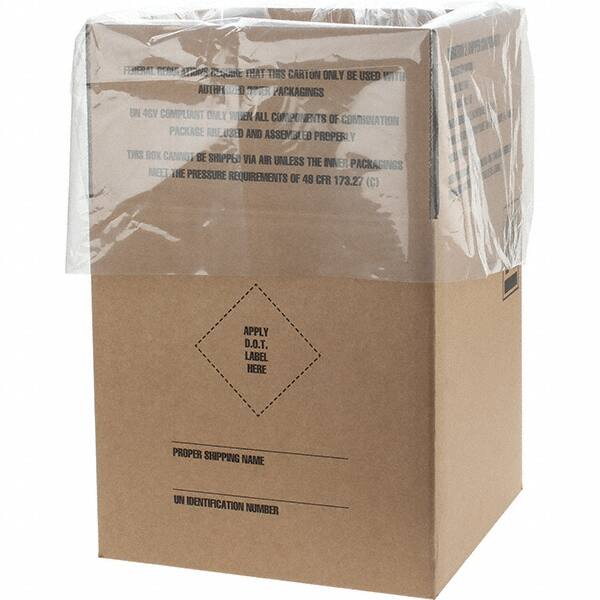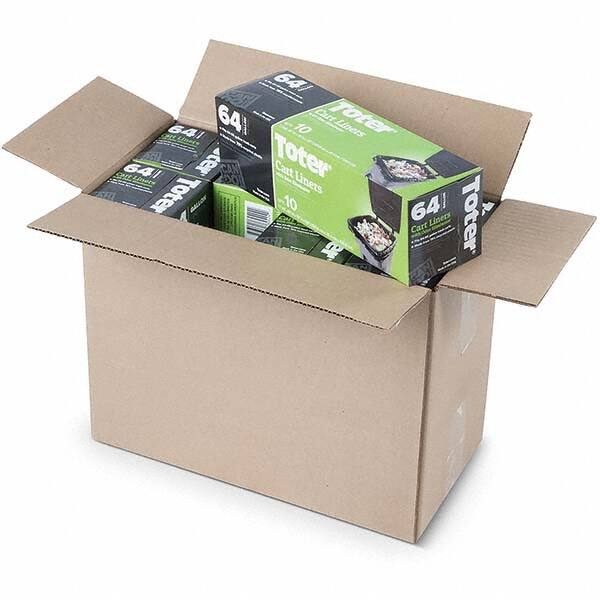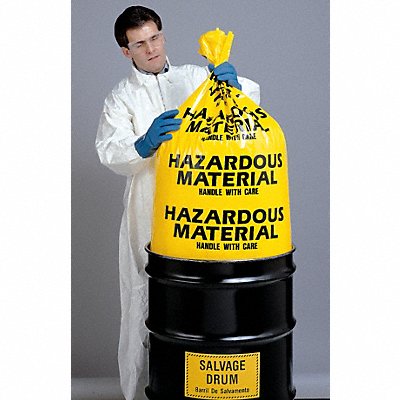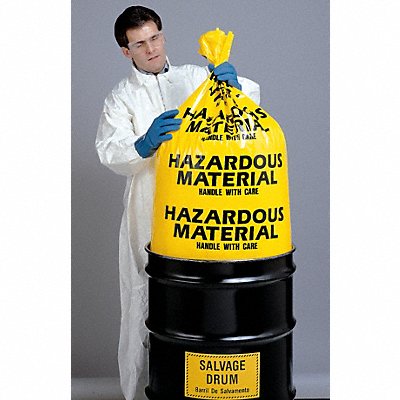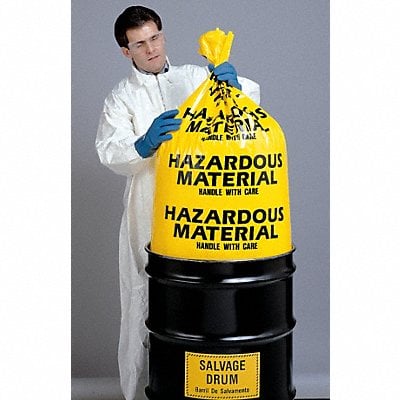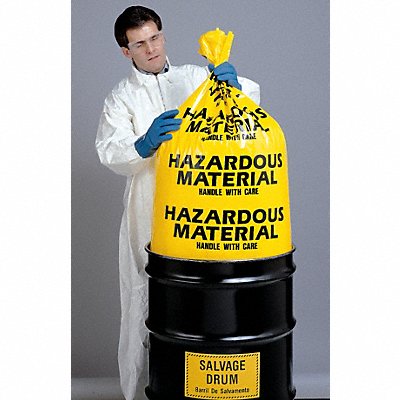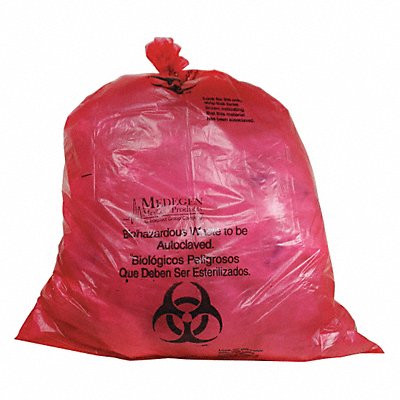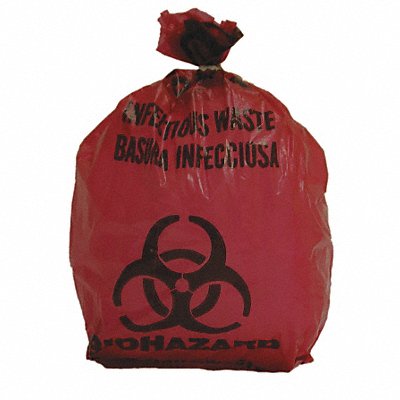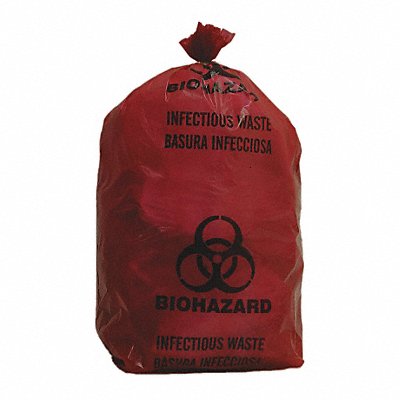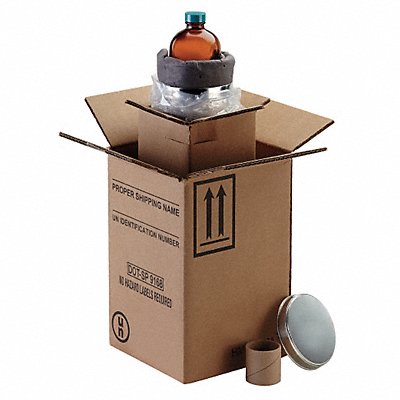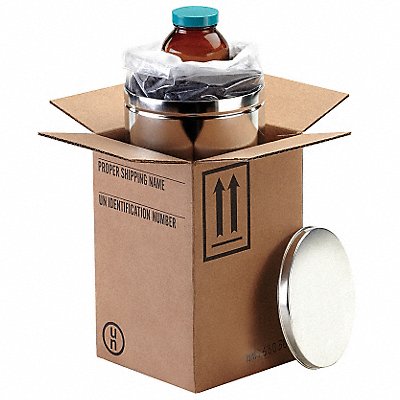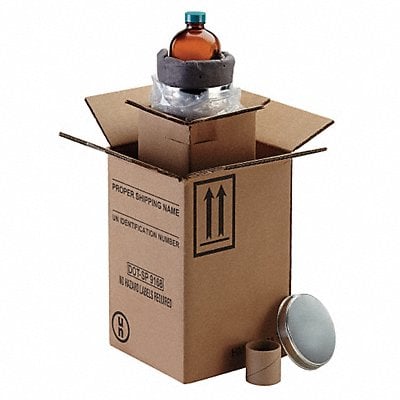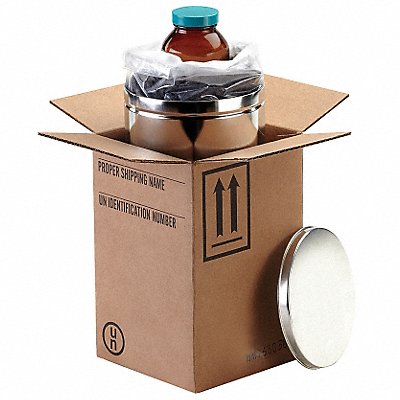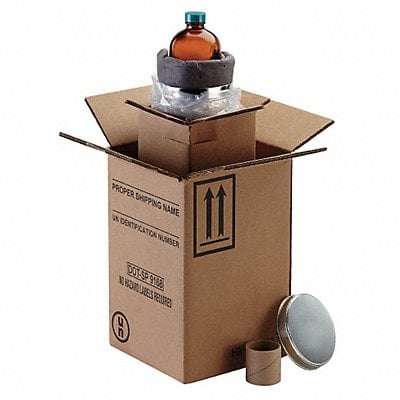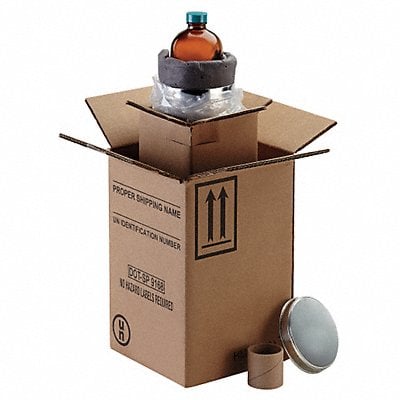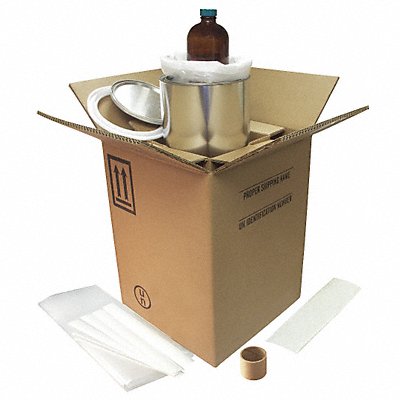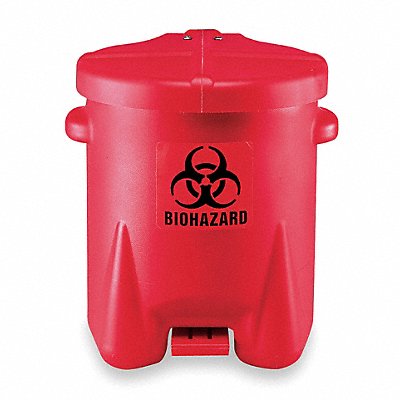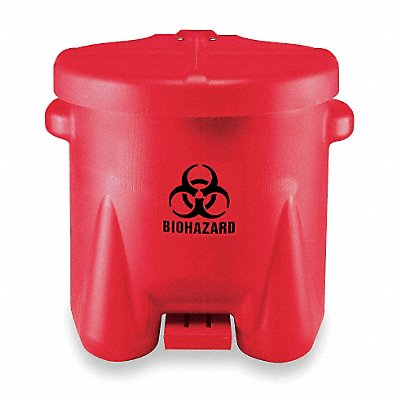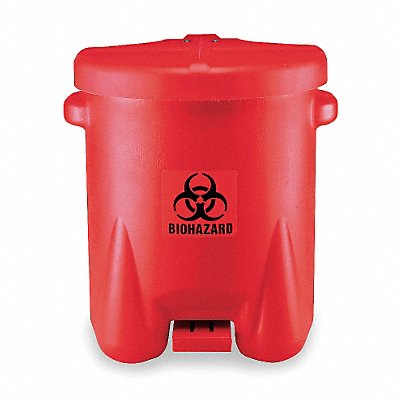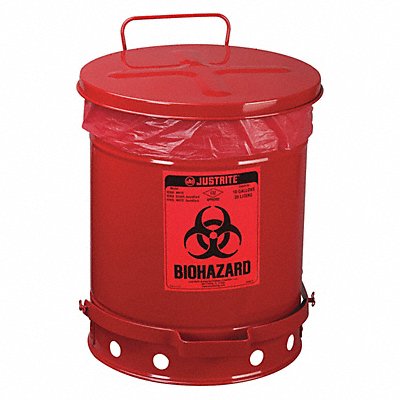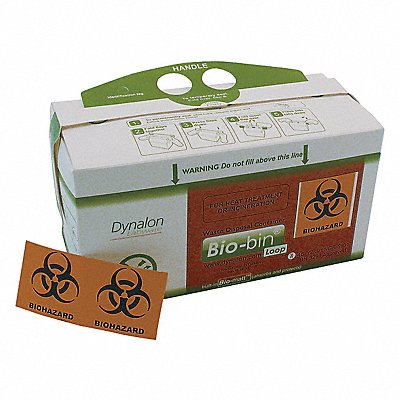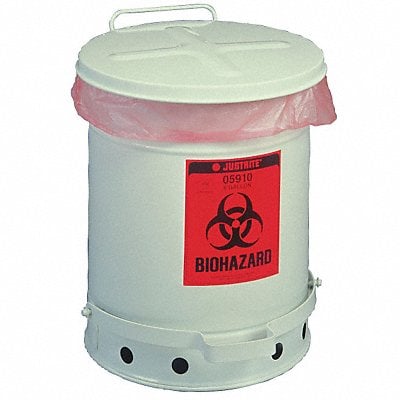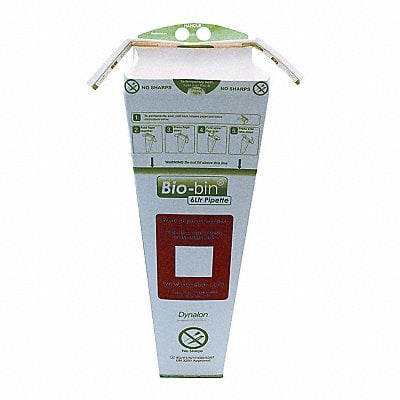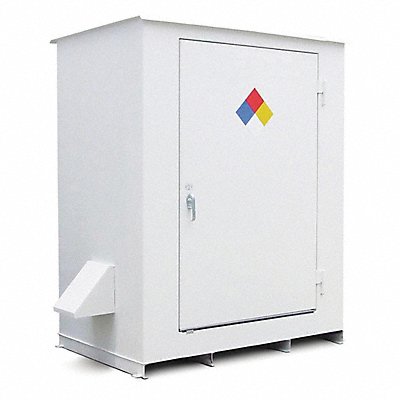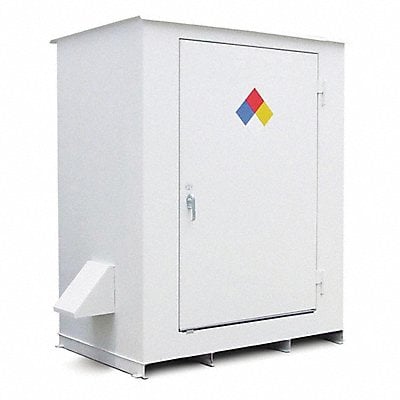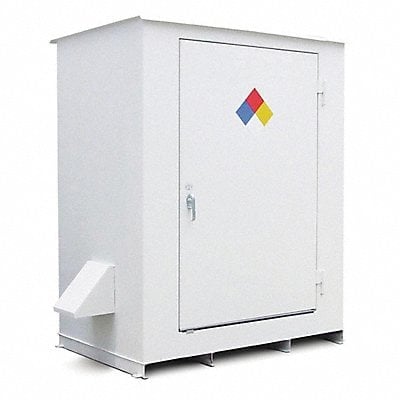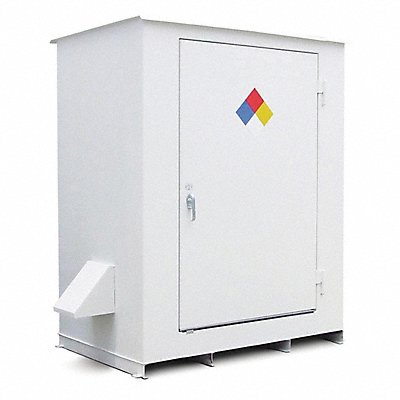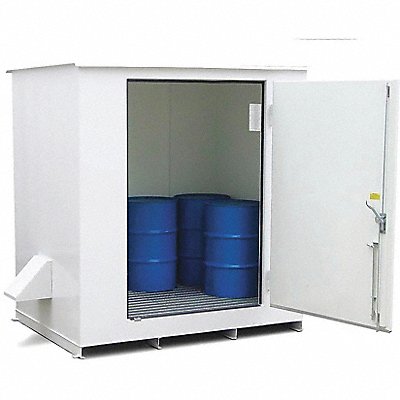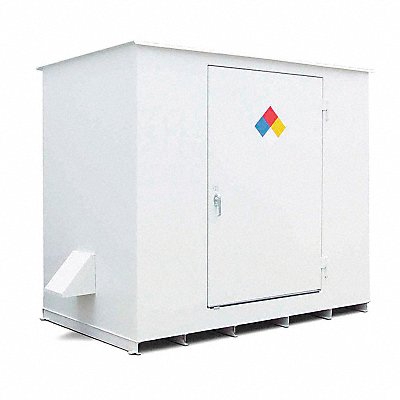Safe Management of Biohazard and Hazardous Materials

Introduction:
In today's industrial and healthcare sectors, the safe handling, storage, and disposal of hazardous materials and biohazard waste are of paramount importance. Ensuring compliance with regulations and maintaining a safe environment is crucial. This comprehensive guide delves into various product categories available at GoVets.com that cater to these needs. We will provide an overview of each product category, highlight typical applications, discuss the types of hazardous materials they are designed for, and offer product recommendations. So, let's explore these essential categories in detail.
Table of Contents
Part I - The Importance of Properly Handling Biohazard and Hazardous Materials
Part II - Hazardous Material Related Product Recommendations
Part III - Top 25 Hazardous and Biohazard Materials: Handling, Management, Storage, and Shipping
Part I - The Importance of Properly Handling Biohazard and Hazardous Materials
The handling, storage, and transportation of biohazard and hazardous materials are matters of utmost importance. These substances, which include chemicals, biological agents, and other potentially harmful materials, are ubiquitous across various industries. Properly managing them is not just a matter of compliance with regulations; it's a fundamental responsibility to safeguard human health, protect the environment, and prevent legal consequences. In this section, we will delve into the reasons why it's crucial to handle these materials with care, the risks and ramifications of mishandling them, and the top 10 industries that deal with these materials.
1. Reasons for Proper Handling
- Protecting Human Health: One of the primary reasons for proper handling of biohazard and hazardous materials is to protect the health and safety of individuals who come into contact with these substances. Exposure to chemicals, pathogens, or toxic materials can lead to severe health issues, ranging from acute illnesses to chronic conditions.
- Environmental Preservation: Incorrect disposal or spillage of hazardous materials can lead to environmental disasters. Contaminated soil, water, and air can have long-lasting and devastating effects on ecosystems, wildlife, and even human communities.
- Compliance with Regulations: Governments and regulatory bodies impose strict rules and guidelines for the handling and transportation of hazardous materials. Compliance with these regulations is not just a legal requirement but also a moral obligation to ensure public safety.
- Preventing Accidents: Properly storing and handling hazardous materials reduces the risk of accidents, such as spills, leaks, or explosions, that can cause harm to workers and the community.
- Public Perception and Trust: Businesses and organizations that demonstrate a commitment to responsible handling of hazardous materials earn the trust and confidence of their employees, customers, and stakeholders.
2. Risks and Ramifications of Mishandling
a. Legal Consequences
Mishandling biohazard and hazardous materials can lead to serious legal repercussions. Violations of environmental, health, and safety regulations can result in fines, penalties, and even criminal charges against individuals and organizations. These legal consequences not only harm a company's reputation but also have significant financial implications.
b. Environmental Impact
Improper disposal and accidental releases of hazardous materials can lead to catastrophic environmental damage. Contaminated soil can render land unusable for generations, and polluted water sources can impact entire ecosystems. Cleaning up such environmental disasters is not only costly but often impossible to fully rectify.
c. Health Consequences
Exposure to hazardous materials can result in a wide range of health issues, depending on the type of material involved. Chemical exposures may cause acute symptoms like skin irritation, respiratory problems, or even death. Biological agents can lead to infectious diseases. Long-term exposure may result in chronic health conditions, including cancer and neurological disorders.
d. Economic Costs
Mishandling hazardous materials carries substantial economic costs. Cleanup and remediation efforts are expensive, and the economic impact extends to industries, communities, and healthcare systems dealing with the consequences of accidents and exposure.
3. Top 10 Industries Handling Biohazard and Hazardous Materials
- Healthcare and Medical Facilities: This industry deals with biohazardous materials, including blood, tissues, and infectious waste. It also manages hazardous pharmaceuticals and chemicals used in medical procedures.
- Chemical Manufacturing: Chemical industries handle a wide range of hazardous materials, from corrosive chemicals to flammable substances. These materials are used in various manufacturing processes.
- Pharmaceuticals: Pharmaceuticals companies handle potent drugs and chemicals, some of which are hazardous and require special handling and disposal.
- Laboratories and Research Facilities: Research institutions work with biological agents, chemicals, and radioactive materials, all of which fall under the category of hazardous materials.
- Construction and Demolition: Construction sites generate hazardous materials such as asbestos, lead, and various chemicals found in building materials.
- Transportation and Logistics: This industry is responsible for the safe shipping of hazardous materials, including chemicals, explosives, and radioactive materials.
- Oil and Gas: The oil and gas industry deals with flammable and toxic substances, as well as hazardous byproducts produced during drilling and refining.
- Agriculture: Agriculture involves the use of pesticides, herbicides, and fertilizers, some of which are considered hazardous materials.
- Waste Management: Waste management companies handle biohazardous waste, hazardous chemicals, and contaminated materials, ensuring safe disposal and treatment.
- Mining: The mining industry works with various hazardous materials, including toxic chemicals used in extraction processes and byproducts such as tailings.
In each of these industries, the types of hazardous and biohazardous materials handled may vary, but the need for proper handling, storage, and disposal remains constant. By recognizing the importance of responsible management and adhering to regulations, these industries can minimize risks, protect the environment, and ensure the well-being of their workers and the public.
Part II - Hazardous Material Related Product Recommendations
Ensuring compliance with regulations and maintaining a safe environment is crucial. This section divess into various product categories available at GoVets.com that cater to these needs. This section provides an overview of each product category, highlight typical applications, discuss the types of hazardous materials they are designed for, and offer product recommendations. So, let's explore these essential categories in detail. Lets dive in!
1. Hazardous Material Boxes
Overview
Hazardous Material Boxes are specially designed containers that provide a secure and compliant way to transport hazardous materials. They come in various sizes and are often constructed with durable materials to withstand the rigors of transportation.
Typical Applications
- Chemical Transportation: Hazardous material boxes are commonly used to transport chemicals safely.
- Laboratory Use: Labs use them for the secure transport of hazardous substances.
- Pharmaceutical Industry: Pharmaceutical companies use these boxes for transporting hazardous drugs.
Types of Hazardous Materials
Hazardous Material Boxes are suitable for a wide range of hazardous materials, including corrosive chemicals, toxic substances, and flammable materials.
Product Recommendations
Explore a variety of Hazardous Material Boxes here.
2. Trash Bags, Liners & Hazardous Waste Bags
Overview
Trash Bags, Liners, & Hazardous Waste Bags are essential for the proper containment and disposal of waste materials, including hazardous and biohazardous waste.
Typical Applications
- Healthcare Facilities: These bags are commonly used in hospitals and clinics for the disposal of medical waste.
- Laboratories: Labs use them to dispose of hazardous materials safely.
- Industrial Settings: Industries dealing with chemical waste rely on these bags.
Types of Hazardous Materials
These bags can handle various hazardous materials, such as infectious waste, chemicals, and biohazardous materials.
Product Recommendations
Find a range of Trash Bags and Hazardous Waste Bags here.
3. Hazardous Waste Bags
Overview
Hazardous Waste Bags are specialized bags designed to safely contain and transport hazardous waste materials. They are typically color-coded for easy identification.
Typical Applications
- Environmental Cleanup: These bags are used in environmental remediation projects.
- Construction Sites: Hazardous materials generated during construction are collected in these bags.
- Chemical Industries: Chemical companies use them for waste disposal.
Types of Hazardous Materials
These bags are suitable for various hazardous materials, including chemicals, contaminated soil, and industrial byproducts.
Product Recommendations
Browse a selection of Hazardous Waste Bags here.
4. Hazardous Material Shipping Kits
Overview
Hazardous Material Shipping Kits provide all-in-one solutions for safely packaging and shipping hazardous materials. They ensure compliance with shipping regulations.
Typical Applications
- Manufacturing: Companies shipping hazardous products use these kits.
- Laboratory Testing: Labs sending samples for testing rely on these kits.
- E-commerce: Businesses shipping hazardous goods through online sales utilize these kits.
Types of Hazardous Materials
These kits can accommodate a wide range of hazardous materials, including chemicals, biological substances, and radioactive materials.
Product Recommendations
Explore Hazardous Material Shipping Kits here.
5. Biohazard Waste Cans
Overview
Biohazard Waste Cans are specially designed containers for the safe disposal of biohazard waste materials. They are essential for maintaining a hygienic and safe environment.
Typical Applications
- Medical Facilities: Hospitals and clinics use these cans for biohazard waste disposal.
- Research Labs: Research institutions dealing with biological materials rely on these cans.
- Veterinary Clinics: Veterinary practices use them for animal biohazard waste.
Types of Hazardous Materials
Biohazard Waste Cans are intended for biohazardous materials such as blood-soaked items, tissues, and other potentially infectious substances.
Product Recommendations
Discover a variety of Biohazard Waste Cans here.
6. Hazardous Material Storage Buildings and Lockers
Overview
Hazardous Material Storage Buildings and Lockers are designed to store hazardous materials safely. They provide secure containment and protection against environmental factors.
Typical Applications
- Industrial Facilities: Industries handling hazardous chemicals use these storage solutions.
- Construction Sites: Hazardous materials generated during construction are stored in these buildings and lockers.
- Laboratories: Research labs need secure storage for hazardous substances.
Types of Hazardous Materials
These storage solutions are suitable for various hazardous materials, including flammable chemicals, corrosive substances, and explosives.
Product Recommendations
Find Hazardous Material Storage Buildings and Lockers here.
7. Hazardous Material Storage Cabinets
Overview
Hazardous Material Storage Cabinets are a crucial component of safe storage in laboratories, industrial facilities, and healthcare settings. They are designed to prevent leaks and spills.
Typical Applications
- Laboratories: Labs use these cabinets for storing chemicals and hazardous materials.
- Manufacturing: Industries with hazardous materials require these cabinets.
- Healthcare: Hospitals and clinics use them for pharmaceutical storage.
Types of Hazardous Materials
These cabinets are suitable for various hazardous materials, including acids, bases, and volatile organic compounds.
Product Recommendations
Explore a range of Hazardous Material Storage Cabinets here.
8. Oily & Biohazardous Receptacles
Overview
Oily & Biohazardous Receptacles are containers designed to safely collect and segregate biohazard waste and oily materials, preventing contamination and environmental harm.
Typical Applications
- Automotive Workshops: These receptacles are used to collect oily rags and materials.
- Medical Facilities: Healthcare institutions use them for biohazard waste disposal.
- Industrial Settings: Industries generating oily waste rely on these receptacles.
Types of Hazardous Materials
These receptacles cater to oily materials and biohazard waste, including chemicals, contaminated materials, and biological substances.
Product Recommendations
Discover Oily & Biohazardous Receptacles here.
9. Biohazardous & Step-Open Trash Cans
Overview
Biohazardous & Step-Open Trash Cans are designed for convenient and hygienic disposal of biohazard waste. They feature hands-free operation for added safety.
Typical Applications
- Medical Facilities: Hospitals and clinics use these cans for biohazard waste disposal.
- Research Labs: Research institutions dealing with biological materials rely on these cans.
- Food Service: Restaurants and food establishments use them for sanitary waste disposal.
Types of Hazardous Materials
These trash cans are intended for biohazardous waste materials such as used needles, contaminated gloves, and biohazard bags.
Product Recommendations
Explore Biohazardous & Step-Open Trash Cans here.
Part III - Top 25 Hazardous and Biohazard Materials: Handling, Management, Storage, and Shipping
Handling hazardous and biohazard materials demands utmost care, attention to detail, and adherence to strict guidelines. The consequences of improper handling can be severe, ranging from environmental damage to health hazards. In this section, we will discuss the top 25 hazardous and biohazard materials, offering guidance on how to properly handle, manage, store, and ship these substances. It's crucial to note that regulations and compliance standards can vary by location, so always consult your local authorities for precise guidance.
1. Chemicals (Corrosive, Flammable, Toxic)
Handling:
- Use personal protective equipment (PPE) like gloves, goggles, and lab coats.
- Store chemicals in well-ventilated areas.
- Avoid mixing incompatible chemicals.
Management:
- Label containers with hazard information.
- Keep an inventory of chemical stock.
- Train employees in safe handling procedures.
Storage:
- Segregate chemicals based on compatibility.
- Use chemical storage cabinets.
- Store flammable chemicals in flame-resistant cabinets.
Shipping:
- Follow hazardous materials shipping regulations.
- Use UN-approved containers.
- Label packages with proper hazard labels.
2. Biohazardous Materials
Handling:
- Wear appropriate PPE, including gloves, masks, and gowns.
- Use biohazard bags for disposal.
- Autoclave or disinfect materials as needed.
Management:
- Implement a biological safety program.
- Train staff on biohazard procedures.
- Keep a record of biohazardous materials.
Storage:
- Use biohazard storage containers.
- Maintain a biosafety cabinet for work with infectious agents.
- Segregate biohazard materials by risk level.
Shipping:
- Comply with international shipping regulations (e.g., IATA).
- Label packages with biohazard symbols.
- Include documentation of contents.
3. Radioactive Materials
Handling:
- Limit exposure time.
- Use shielding materials.
- Handle materials with remote tools when possible.
Management:
- Establish a radiation safety program.
- Monitor radiation levels regularly.
- Keep detailed records of radioactive materials.
Storage:
- Store radioactive materials in lead-lined containers.
- Use designated storage areas.
- Implement access control measures.
Shipping:
- Comply with regulations from the Nuclear Regulatory Commission (NRC).
- Package materials in accordance with NRC guidelines.
- Label packages with radiation symbols.
4. Asbestos
Handling:
- Wear PPE, including respirators.
- Wet asbestos-containing materials to minimize dust.
- Use hand tools rather than power tools.
Management:
- Identify asbestos-containing materials.
- Develop an asbestos management plan.
- Conduct regular inspections and assessments.
Storage:
- Isolate asbestos-containing materials.
- Keep them in sealed containers.
- Limit access to authorized personnel only.
Shipping:
- Consult regulations regarding asbestos transport.
- Use sealed containers and proper labeling.
- Document asbestos contents.
5. Lead
Handling:
- Wear PPE, including masks and gloves.
- Use lead-safe work practices.
- Prevent lead dust and fumes exposure.
Management:
- Identify lead-containing materials.
- Implement lead abatement procedures.
- Train workers on lead safety.
Storage:
- Keep lead-containing materials in sealed containers.
- Isolate them from other materials.
- Ensure proper ventilation in storage areas.
Shipping:
- Follow lead shipping regulations.
- Label packages as containing lead.
- Provide shipping documentation.
6. Mercury
Handling:
- Use PPE, including gloves and safety goggles.
- Avoid skin contact.
- Clean up spills with mercury spill kits.
Management:
- Identify mercury-containing equipment.
- Replace mercury devices with alternatives.
- Store mercury thermometers in protective cases.
Storage:
- Keep mercury containers tightly sealed.
- Store away from incompatible materials.
- Use secondary containment for larger quantities.
Shipping:
- Check mercury shipping regulations.
- Label packages as containing mercury.
- Provide proper documentation.
7. Pesticides and Herbicides
Handling:
- Wear PPE, including gloves and protective clothing.
- Mix and apply pesticides in well-ventilated areas.
- Follow pesticide label instructions.
Management:
- Keep an inventory of pesticides.
- Store them in original containers.
- Train personnel on pesticide safety.
Storage:
- Store pesticides in a locked, dedicated area.
- Segregate pesticides by type and hazard level.
- Maintain proper ventilation.
Shipping:
- Consult pesticide shipping regulations.
- Label packages with pesticide information.
- Document pesticide contents.
8. Explosives
Handling:
- Use PPE as required by the explosive material.
- Handle explosives with caution and precision.
- Avoid shock, friction, and heat sources.
Management:
- Keep detailed records of explosive materials.
- Store explosives in designated areas.
- Conduct regular safety inspections.
Storage:
- Store explosives in approved magazines.
- Keep magazines away from inhabited areas.
- Secure magazines with locks and alarms.
Shipping:
- Comply with explosive shipping regulations.
- Label packages with explosive hazard labels.
- Follow specific guidelines for each explosive type.
9. Ammonia
Handling:
- Use PPE, including goggles and gloves.
- Avoid inhaling ammonia fumes.
- Work in well-ventilated areas.
Management:
- Identify ammonia-containing systems and equipment.
- Conduct leak detection and repair.
- Train personnel in ammonia safety.
Storage:
- Store ammonia in properly designed tanks.
- Keep tanks away from incompatible materials.
- Implement emergency shutdown procedures.
Shipping:
- Adhere to ammonia shipping regulations.
- Label packages containing ammonia.
- Provide shipping documentation.
10. Acids and Bases
Handling:
- Wear appropriate PPE.
- Use chemical-resistant gloves.
- Handle acids and bases with care to prevent splashes.
Management:
- Label containers with hazard information.
- Store acids and bases separately.
- Provide spill response kits nearby.
Storage:
- Use acid and base storage cabinets.
- Keep containers tightly sealed.
- Install acid-resistant flooring.
Shipping:
- Follow regulations for shipping corrosive materials.
- Label packages with hazard labels.
- Include proper documentation.
11. Cyanide Compounds
Handling:
- Wear PPE, including gloves and eye protection.
- Avoid contact with skin and eyes.
- Use designated tools and equipment.
Management:
- Identify cyanide-containing materials.
- Implement strict access control.
- Train personnel on cyanide safety.
Storage:
- Keep cyanide compounds in locked containers.
- Store them in well-ventilated areas.
- Isolate from other materials.
Shipping:
- Adhere to cyanide shipping regulations.
- Label packages with appropriate warnings.
- Provide shipping documentation.
12. Solvents
Handling:
- Use PPE, including gloves and goggles.
- Work in well-ventilated areas.
- Avoid open flames and sparks.
Management:
- Label containers with hazard information.
- Store solvents in approved containers.
- Implement a solvent management plan.
Storage:
- Use solvent storage cabinets.
- Isolate from incompatible materials.
- Maintain proper ventilation.
Shipping:
- Follow regulations for shipping hazardous chemicals.
- Label packages with appropriate hazard symbols.
- Document solvent contents.
13. Oxidizers
Handling:
- Wear PPE, including gloves and goggles.
- Store away from flammable materials.
- Avoid contamination and mixing.
Management:
- Label containers with oxidizer symbols.
- Keep an inventory of oxidizers.
- Conduct regular inspections.
Storage:
- Store oxidizers in designated areas.
- Isolate them from other substances.
- Maintain proper ventilation.
Shipping:
- Comply with oxidizer shipping regulations.
- Label packages with appropriate symbols.
- Provide shipping documentation.
14. Toxic Gases
Handling:
- Use appropriate gas detection devices.
- Work in well-ventilated areas.
- Have emergency response plans in place.
Management:
- Identify toxic gas sources and equipment.
- Implement gas monitoring systems.
- Train personnel on gas safety.
Storage:
- Store gas cylinders in well-ventilated areas.
- Secure cylinders to prevent tipping.
- Keep incompatible gases separate.
Shipping:
- Follow regulations for shipping compressed gases.
- Label packages with appropriate gas information.
- Include shipping documentation.
15. Biochemicals (Enzymes, Viruses)
Handling:
- Use PPE as required by the materials.
- Handle in certified biosafety cabinets.
- Follow established protocols and procedures.
Management:
- Keep records of biochemical materials.
- Establish a biological safety program.
- Train personnel in biohazard safety.
Storage:
- Store biochemicals in secure freezers.
- Maintain a strict inventory system.
- Use access controls for storage areas.
Shipping:
- Comply with regulations for shipping biological materials.
- Label packages with biohazard symbols.
- Include shipping documentation.
16. Perchloric Acid
Handling:
- Wear appropriate PPE, including acid-resistant gloves and goggles.
- Work in designated acid-resistant fume hoods.
- Use dedicated equipment for perchloric acid.
Management:
- Identify perchloric acid sources and equipment.
- Conduct regular inspections of equipment.
- Implement spill response plans.
Storage:
- Store perchloric acid in acid-resistant cabinets.
- Isolate it from incompatible materials.
- Keep fume hoods well-maintained.
Shipping:
- Follow regulations for shipping corrosive acids.
- Label packages containing perchloric acid.
- Include shipping documentation.
17. Chlorine Gas
Handling:
- Use appropriate gas detection devices.
- Work in well-ventilated areas.
- Follow strict chlorine safety protocols.
Management:
- Implement a chlorine safety program.
- Monitor chlorine systems for leaks.
- Train personnel on chlorine safety.
Storage:
- Store chlorine cylinders in designated areas.
- Ensure proper ventilation in storage areas.
- Isolate chlorine from incompatible substances.
Shipping:
- Comply with regulations for shipping compressed gases.
- Label packages with appropriate gas information.
- Include shipping documentation.
18. Phosphorus Compounds
Handling:
- Use PPE, including gloves and eye protection.
- Work in well-ventilated areas.
- Avoid contact with skin and eyes.
Management:
- Identify phosphorus-containing materials.
- Implement safe handling procedures.
- Train personnel on phosphorus safety.
Storage:
- Store phosphorus compounds in sealed containers.
- Keep them away from incompatible materials.
- Maintain proper ventilation.
Shipping:
- Follow regulations for shipping hazardous chemicals.
- Label packages with appropriate hazard symbols.
- Provide shipping documentation.
19. Sulfuric Acid
Handling:
- Wear appropriate PPE, including acid-resistant gloves and goggles.
- Avoid skin and eye contact.
- Use caution when diluting.
Management:
- Identify sulfuric acid sources and equipment.
- Conduct regular inspections of equipment.
- Train personnel in sulfuric acid safety.
Storage:
- Store sulfuric acid in acid-resistant cabinets.
- Isolate it from incompatible materials.
- Maintain proper ventilation.
Shipping:
- Comply with regulations for shipping corrosive acids.
- Label packages containing sulfuric acid.
- Include shipping documentation.
20. Hydrochloric Acid
Handling:
- Use PPE, including acid-resistant gloves and goggles.
- Avoid skin and eye contact.
- Work in well-ventilated areas.
Management:
- Identify hydrochloric acid sources and equipment.
- Conduct regular inspections of equipment.
- Implement spill response plans.
Storage:
- Store hydrochloric acid in acid-resistant cabinets.
- Keep it isolated from incompatible substances.
- Maintain proper ventilation.
Shipping:
- Follow regulations for shipping corrosive acids.
- Label packages containing hydrochloric acid.
- Include shipping documentation.
21. Methanol
Handling:
- Wear appropriate PPE, including gloves and goggles.
- Use in well-ventilated areas.
- Avoid open flames and sparks.
Management:
- Identify methanol-containing materials.
- Conduct regular inspections for leaks.
- Train personnel in methanol safety.
Storage:
- Store methanol in approved containers.
- Isolate it from incompatible materials.
- Maintain proper ventilation.
Shipping:
- Comply with regulations for shipping flammable liquids.
- Label packages containing methanol.
- Include shipping documentation.
22. Ethanol
Handling:
- Wear appropriate PPE, including gloves and goggles.
- Use ethanol in well-ventilated areas.
- Avoid open flames and sparks.
Management:
- Identify ethanol-containing materials.
- Conduct regular inspections for leaks.
- Train personnel in ethanol safety.
Storage:
- Store ethanol in approved containers.
- Isolate it from incompatible materials.
- Maintain proper ventilation.
Shipping:
- Follow regulations for shipping flammable liquids.
- Label packages containing ethanol.
- Include shipping documentation.
23. Formaldehyde
Handling:
- Use appropriate PPE, including gloves and goggles.
- Work in well-ventilated areas.
- Avoid skin and eye contact.
Management:
- Identify formaldehyde sources and equipment.
- Implement safe handling procedures.
- Train personnel on formaldehyde safety.
Storage:
- Store formaldehyde in sealed containers.
- Isolate it from incompatible substances.
- Keep it in well-ventilated storage areas.
Shipping:
- Comply with regulations for shipping hazardous chemicals.
- Label packages containing formaldehyde.
- Provide shipping documentation.
24. Hydrogen Peroxide
Handling:
- Wear appropriate PPE, including gloves and goggles.
- Store away from flammable materials.
- Avoid contact with skin and eyes.
Management:
- Identify hydrogen peroxide sources and equipment.
- Conduct regular inspections for leaks.
- Train personnel in hydrogen peroxide safety.
Storage:
- Store hydrogen peroxide in approved containers.
- Keep it away from incompatible materials.
- Maintain proper ventilation.
Shipping:
- Follow regulations for shipping corrosive liquids.
- Label packages containing hydrogen peroxide.
- Include shipping documentation.
25. Nitric Acid
Handling:
- Wear appropriate PPE, including acid-resistant gloves and goggles.
- Avoid skin and eye contact.
- Use in well-ventilated areas.
Management:
- Identify nitric acid sources and equipment.
- Conduct regular inspections for leaks.
- Train personnel in nitric acid safety.
Storage:
- Store nitric acid in acid-resistant cabinets.
- Keep it isolated from incompatible substances.
- Maintain proper ventilation.
Shipping:
- Comply with regulations for shipping corrosive acids.
- Label packages containing nitric acid.
- Include shipping documentation.
Handling, managing, storing, and shipping hazardous and biohazard materials require strict adherence to safety protocols and regulations. Always consult your local compliance and regulations to ensure you are following the specific guidelines applicable in your area. In addition to the general recommendations provided above, here are some essential considerations for safely handling these materials:
General Safety Tips:
- Risk Assessment: Conduct a thorough risk assessment for any hazardous material you work with. Understand the potential hazards and risks associated with each substance.
- Emergency Response: Develop and communicate clear emergency response plans to address spills, leaks, fires, or any other accidents involving hazardous materials.
- Training: Ensure that all personnel handling hazardous materials are adequately trained and aware of safety procedures. Regular training and drills are essential.
- Labeling: Clearly label all containers and storage areas with the appropriate hazard symbols, warnings, and information about the contents.
- Ventilation: Maintain proper ventilation in storage areas and workspaces to prevent the accumulation of fumes or vapors.
- Personal Protective Equipment (PPE): Provide and require the use of suitable PPE, including gloves, goggles, respirators, lab coats, and any specialized equipment needed for specific materials.
- Storage Compatibility: Store hazardous materials separately and according to their compatibility to prevent chemical reactions or reactions with other substances.
- Documentation: Maintain detailed records of all hazardous materials, including their quantity, location, and handling procedures.
- Spill Kits: Have appropriate spill response kits readily available and ensure employees know how to use them.
- Waste Disposal: Follow proper procedures for the disposal of hazardous waste materials. This may include contracting with licensed waste disposal companies.
- Security: Implement access controls and security measures to prevent unauthorized access to hazardous materials.
- Regulatory Compliance: Keep up-to-date with local, state, and federal regulations governing the handling and disposal of hazardous materials. Compliance is not optional; it's a legal obligation.
Guidance on Local Compliance and Regulations:
It's crucial to emphasize that regulatory requirements for handling hazardous and biohazard materials can vary significantly based on your location and the specific nature of the materials involved. Always consult with local environmental agencies, health departments, and regulatory bodies to ensure you are in full compliance with the law.
Additionally, consider seeking guidance from professional organizations, industry associations, and experienced experts in the field. They can provide valuable insights and best practices for handling specific hazardous materials.
Section Wrap-Up:
Properly handling, managing, storing, and shipping hazardous and biohazard materials is a complex and vital responsibility. Failing to do so can have far-reaching consequences, including legal, environmental, and health-related ramifications. By following strict safety protocols, staying informed about regulations, and continuously training personnel, you can mitigate risks and ensure the safety of your workers, the community, and the environment. Remember, safety always comes first when dealing with hazardous and biohazard materials.



